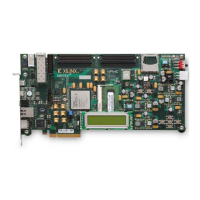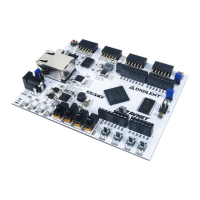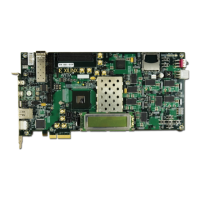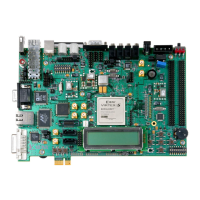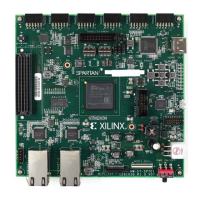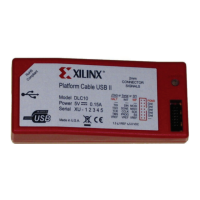16 www.xilinx.com AC701 Getting Started Guide
UG967 (v3.0) July 10, 2013
AMS Bring-up with the AMS101 Evaluation Card
Evaluating AMS
1. Power off the AC701 board, connect the AMS101 card, and re-apply power to the
hardware.
a. Connect the AMS101 evaluation card to the AC701 board, making sure the notch
on the XADC header lines up correctly with the connector on the AMS101
evaluation card.
2. Implement the design to the Artix-7 XC7A200T -2 FB676 FPGA from the AC701 AMS
design file xadc_eval_design_ac701_v1_0 previously downloaded.
a. Open the ChipScope™ analyzer:
Start > All Programs > Xilinx Design Tools > ISE Design Suite > ChipScope Pro
Analyzer
b. Click the Open_cable command and select OK.
c. Right-click over the Device, choose Configure, and click Select New File.
d. Open xadc_eval_design.bit from the AC701 board AMS design files folder:
xadc_eval_design_ac701_v1_0 > ready_to_test > xadc_eval_design.bit
3. Open the AMS Evaluator tool.
a. Running the setup program loads the AMS101 Evaluator GUI with the red Xilinx
logo on your desktop. Figure 11 shows the AMS101 Evaluator after opening. From
here, click the Connect button. When the button is green, click the Collect Data
button in the center to quickly evaluate the analog signals in the time and
frequency domain, display linearity, verify the XADC register settings, and
measure the internal temperature sensor and supply voltages.
b. Collect Data button in the center to quickly evaluate the analog signals in the time
and frequency domain, display linearity, verify the XADC register settings, and
measure the internal temperature sensor and supply voltages.
c. Figure 12 shows the XADC results in the frequency domain.
d. The AMS101 evaluation card provides a dual 16-bit DAC for use as an analog test
source. External analog signals can also be applied to the card. For a more
extensive explanation of the AMS101 evaluation card and the various functions in
the AMS Evaluator tool, see U
G886, AMS101 Evaluation Card User Guide.
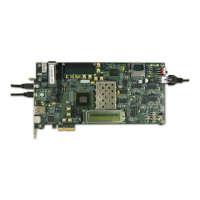
